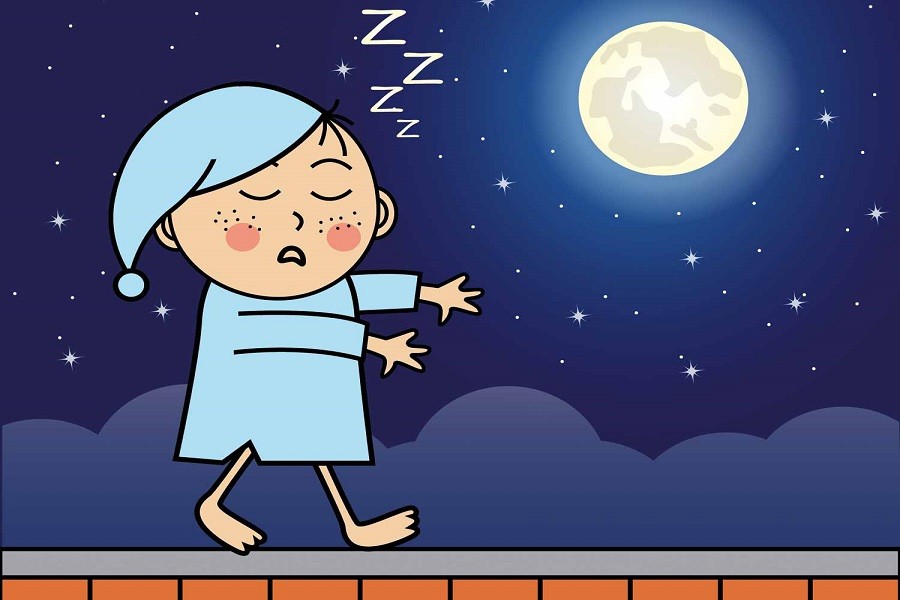
Published :
Updated :

Many people demonstrate strange behaviour during sleep, these are often part of sleep disorders collectively called parasomnias. They can occur at any age and often cause unsettling actions while sleeping.
In most cases, the person does not have any recollection of the events the next morning.
One of the commonest behaviours is sleep talking. It’s been suggested that people experience sleep talking at least once in their life. The episodes are usually brief and range from a few mumbling incomprehensible sounds to fully meaningful words or sentences. Sometimes sleep talking involves hostile or angry speeches.
Sleep talking generally does not have a major effect on sleep. But it may indicate a deeper problem when combined with other parasomnias. Moreover, the whole episode could be embarrassing, especially if the person says something awkward. This is also disruptive to the other person sleeping in bed, i.e. the spouse.
Sleepwalking is very popular in public perception, though it is not that common. The affected person acts like s/he is awake but is actually asleep. This often starts with sitting up in the bed, fumbling bedclothes, looking around in confusion and then getting out of bed to walk. The eyes of the sleepwalker are open, with a vacant and glassy stare.
Sleepwalking is more common in males and is frequently linked to bedwetting. Research suggests that about 15 per cent of children between 5-12 years may experience this. Sleepwalking can be dangerous if the person indulges in certain behaviours, e.g. driving, violent actions, etc.
Sleep/night terrors usually affect children between 1-8 years. They are different from nightmares. Children may remember some part of the nightmare but not sleep terrors.
During an episode, the child seems awake, agitated and screaming. But they are still asleep and it’s difficult to wake them up at this stage. After 12 years they generally go away. Sleep terrors are unsettling for a child’s mental health.
Nightmares, on the other hand, are more like vivid dreams consisting of scary images. They create fear and extreme anxiety.
A group of related sleep disorders occur during REM sleep, known as a REM behaviour disorder. The body maintains an increased muscle tone during this, causing the individual to act out the dreams. REM behaviour disorders usually manifest in middle-aged or older men. During sleep, they may show actions like kicking, punching, choking, etc. These kinds of violent actions are dangerous and may cause injury to the self or the bed partner.
Sleep paralysis is a general loss of control of the body muscles. This is often accompanied by hallucinations and fleeting episodes of extreme terror. Some people may find it difficult to dissociate it from a dream.
Sleep disorders are commonly the result of poor sleep patterns, stress, other illness or even medication. Establishing a regular and healthy sleep pattern, practising relaxation techniques, eating a well-balanced diet, and exercising properly - all can help to reduce the risk of such problems.
But if the behaviours become dangerous to self or others, or they continue to occur frequently that severely disrupt sleep, it is advisable to consult a physician.
imtiazdmc@gmail.com


 For all latest news, follow The Financial Express Google News channel.
For all latest news, follow The Financial Express Google News channel.